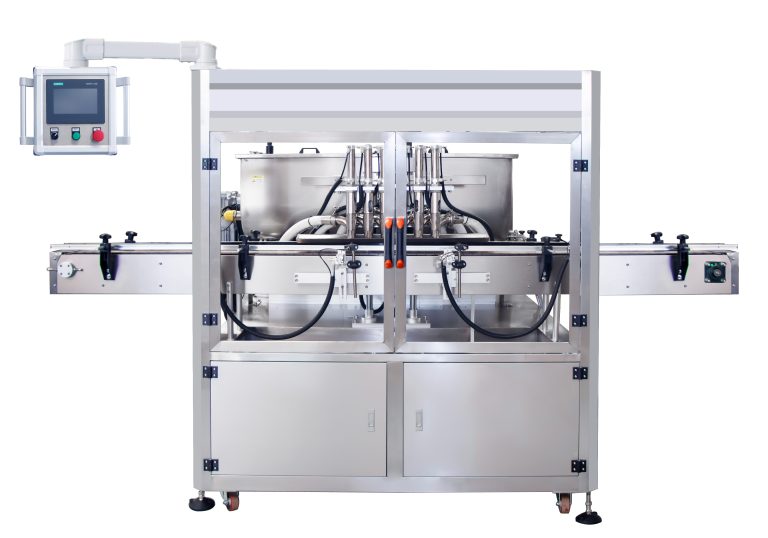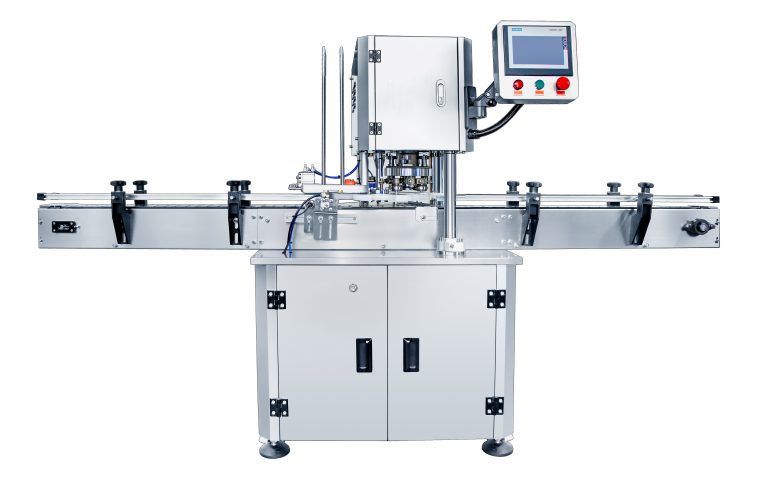Table of Contents
Benefits of High-Capacity Liquid Filling Solutions for Food Processing
High-capacity liquid filling solutions have become an essential component in the food processing industry. These systems offer numerous benefits that can streamline production processes, improve efficiency, and ensure product quality. In this article, we will explore the advantages of high-capacity liquid filling solutions for food applications.
One of the primary benefits of high-capacity liquid filling solutions is their ability to increase production output. These systems are designed to fill a large number of containers quickly and accurately, allowing food manufacturers to meet high demand without compromising on quality. By automating the filling process, companies can significantly reduce production time and labor costs, ultimately improving their bottom line.
In addition to increasing production output, high-capacity liquid filling solutions also help to improve efficiency in food processing. These systems are equipped with advanced technology that ensures precise filling levels and minimizes product waste. By eliminating human error and inconsistencies in the filling process, manufacturers can achieve greater consistency in product quality and reduce the risk of costly recalls.

Furthermore, high-capacity liquid filling solutions offer versatility in food applications. These systems can handle a wide range of products, from thin liquids like water and juice to thick sauces and dressings. With customizable filling options and adjustable speed settings, manufacturers can easily adapt the system to meet the specific requirements of different food products, ensuring optimal performance and efficiency.
Another key benefit of high-capacity liquid filling solutions is their ability to maintain product integrity. These systems are designed to handle delicate food products with care, minimizing agitation and foaming during the filling process. By maintaining the integrity of the product, manufacturers can ensure that the final product meets the highest quality standards and retains its freshness and flavor.
Moreover, high-capacity liquid filling solutions help to improve food safety and hygiene in the production process. These systems are equipped with sanitary design features that prevent contamination and ensure compliance with food safety regulations. By reducing the risk of cross-contamination and ensuring proper cleaning and sterilization procedures, manufacturers can maintain a safe and hygienic production environment.
In conclusion, high-capacity liquid filling solutions offer numerous benefits for food processing applications. From increasing production output and efficiency to maintaining product integrity and ensuring food safety, these systems play a crucial role in streamlining production processes and improving overall quality. By investing in high-capacity liquid filling solutions, food manufacturers can enhance their competitiveness in the market, meet consumer demand, and achieve greater success in the industry.
Top Considerations When Choosing a High-Capacity Liquid Filling Solution for Food Applications
When it comes to food production, efficiency and accuracy are key factors in ensuring a successful operation. One crucial aspect of food production is the liquid filling process, which requires precision and consistency to meet quality standards and regulatory requirements. High-capacity liquid filling solutions are essential for food applications that require large volumes of liquid to be filled quickly and accurately. In this article, we will discuss the top considerations when choosing a high-capacity liquid filling solution for food applications.
One of the most important factors to consider when selecting a high-capacity liquid filling solution is the type of food product being filled. Different types of food products have varying viscosities, textures, and particulate sizes, which can affect the performance of the filling equipment. It is essential to choose a filling solution that is specifically designed to handle the unique characteristics of the food product to ensure accurate and efficient filling.
Another key consideration is the production volume and speed requirements of the food application. High-capacity liquid filling solutions are designed to fill large volumes of liquid quickly and accurately, making them ideal for high-speed production lines. It is important to choose a filling solution that can meet the production demands of the food application without compromising on quality or accuracy.
Accuracy and precision are critical factors in the food industry, where even small variations in filling volumes can impact product quality and consumer satisfaction. High-capacity liquid filling solutions should be equipped with advanced technology and features that ensure precise and consistent filling, such as servo-driven filling systems, automatic volume adjustment, and integrated quality control mechanisms. These features help to minimize product waste, reduce downtime, and improve overall production efficiency.
In addition to accuracy and precision, hygiene and sanitation are paramount in food production to ensure product safety and compliance with regulatory standards. High-capacity liquid filling solutions for food applications should be constructed from high-quality materials that are easy to clean and sanitize, such as stainless steel or food-grade plastics. The equipment should also be designed with sanitary features, such as CIP (clean-in-place) systems, drip trays, and splash guards, to prevent contamination and ensure product integrity.
Ease of operation and maintenance are also important considerations when choosing a high-capacity liquid filling solution for food applications. The equipment should be user-friendly and intuitive, with simple controls and settings that can be easily adjusted to accommodate different filling requirements. Additionally, the filling solution should be designed for easy maintenance and servicing, with quick access to components for cleaning, inspection, and repair.
Cost is another factor to consider when selecting a high-capacity liquid filling solution for food applications. While it is important to invest in quality equipment that meets the specific needs of the food application, it is also essential to consider the overall cost of ownership, including initial purchase price, operating costs, and maintenance expenses. It is advisable to compare different filling solutions based on their features, performance, and total cost of ownership to make an informed decision that aligns with the budget and production goals of the food application.
In conclusion, choosing a high-capacity liquid filling solution for food applications requires careful consideration of various factors, including the type of food product, production volume and speed requirements, accuracy and precision, hygiene and sanitation, ease of operation and maintenance, and cost. By selecting a filling solution that meets these top considerations, food manufacturers can ensure efficient and reliable liquid filling processes that meet quality standards and regulatory requirements.
Case Studies: Successful Implementation of High-Capacity Liquid Filling Solutions in Food Industry
High-capacity liquid filling solutions have become increasingly popular in the food industry due to their efficiency and accuracy in filling containers with various types of liquids. These solutions are designed to handle large volumes of liquid products quickly and accurately, making them ideal for food manufacturers looking to increase their production output while maintaining high quality standards.
One successful implementation of high-capacity liquid filling solutions in the food industry is at a large-scale beverage manufacturing plant. The plant was facing challenges with their existing filling equipment, which was slow and prone to errors. This resulted in production delays and inconsistencies in product quality. In order to address these issues, the plant invested in a high-capacity liquid filling solution that was capable of filling thousands of bottles per hour with precision and accuracy.
The new filling solution not only increased the plant’s production output significantly but also improved the overall quality of the finished products. The accuracy of the filling process ensured that each bottle was filled to the exact specifications, reducing waste and improving customer satisfaction. The plant was able to meet the growing demand for their products without compromising on quality, thanks to the high-capacity liquid filling solution.
Another successful implementation of high-capacity liquid filling solutions in the food industry is at a sauce manufacturing facility. The facility was struggling to keep up with the demand for their popular sauces, as their existing filling equipment was slow and inefficient. This led to production bottlenecks and delays in fulfilling orders, which was impacting the company’s bottom line. In order to address these challenges, the facility invested in a high-capacity liquid filling solution that was specifically designed for filling viscous liquids like sauces.
The new filling solution revolutionized the facility’s production process, allowing them to fill hundreds of bottles per minute with consistent accuracy. The high-capacity liquid filling solution was able to handle the thick and sticky consistency of the sauces without clogging or spilling, ensuring that each bottle was filled to the exact specifications. This not only increased the facility’s production output but also improved the overall efficiency of their operations.
One of the key benefits of high-capacity liquid filling solutions in the food industry is their versatility. These solutions can be customized to accommodate a wide range of liquid products, from thin liquids like water to thick and viscous liquids like sauces and dressings. This flexibility allows food manufacturers to use the same filling equipment for multiple products, reducing the need for separate filling lines and saving on costs.
In conclusion, high-capacity liquid filling solutions have proven to be a game-changer for food manufacturers looking to increase their production output and improve the quality of their products. These solutions offer unmatched efficiency and accuracy in filling containers with various types of liquids, making them an essential investment for any food production facility. By implementing high-capacity liquid filling solutions, food manufacturers can streamline their production processes, reduce waste, and meet the growing demand for their products with ease.







